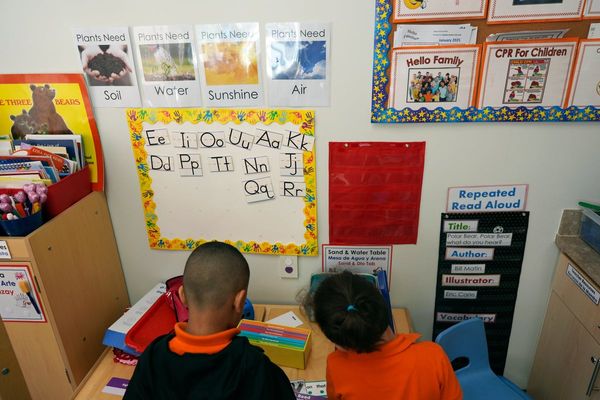
It was “17 minutes of terror” in the making of history as India’s Chandrayaan-3 spacecraft descended on the moon’s south pole today. And so, India became the first country ever to land on the south pole, and only the fourth to secure a successful moon landing.
The spacecraft with lander Vikram and rover Pragyan had stormed into space from Sriharikota in Andhra Pradesh on July 14, amid uncertainties. “The next 42 days are crucial,” ISRO chairman S Somanath had said. Today, as Chandrayaan-3 touched down on the moon, ISRO’s mission control centre in Bengaluru was taken over by thunderous applause and loud cheers.
“We have achieved soft landing on the moon, India is on the moon,” declared Somnath.
Prime Minister Narendra Modi, who is in South Africa’s Johannesburg for the BRICS summit, virtually joined the live telecast. Addressing the nation after the successful soft landing, the prime minister described the moments as “unforgettable, phenomenal, a developed India’s clarion call and the new India’s cheers”. He added that “this will change all narratives and stories about the moon”.
The Chandrayaan 3’s successful soft-landing comes merely days after Russia announced on Sunday that its Luna-25 – which was also headed to the moon's south pole – had crashed. Similarly, India’s second moon mission Chandrayaan-2’s Vikram lander had crashed into the lunar surface minutes before its scheduled landing in 2019.
Even as Chandrayaan-2’s lander was destroyed, its orbiter has continued to go around the moon for four years – and anchored Chandrayaan-3 in its landing. Chandrayaan-3’s Vikram lander’s communication was tethered to the orbitor, which aided it in securing a smooth landing, while AI and autonomous systems onboard the spacecraft controlled the descent.
The first ever lunar mission was launched by the US in August 1958. Over the past 65 years, only the US, China, the erstwhile USSR, and now India can boast of a moon landing even as over 111 moon missions have been launched, as per NASA data.
The landing on moon’s south pole or the dark side is crucial as the unexplored region with water ice, or frozen water, can prove to be a source of oxygen, fuel and water — vital for future moon missions and other space exploration.
The successful lunar landing of #Chandrayaan3 brings an immense sense of accomplishment to Tamil Nadu. The three #Chandrayaan missions have been led by exceptional minds from Tamil Nadu - Mayilsamy Annadurai, M Vanitha, and now P Veeramuthuvel. Their dedication and expertise… https://t.co/ESTsTnZij5 pic.twitter.com/nUyUBoNLUv
— M.K.Stalin (@mkstalin) August 23, 2023
Hail Chandrayaan-3!
— Mamata Banerjee (@MamataOfficial) August 23, 2023
Hail its stupendous success!!
Hail @isro!!
Hail our nation's magnificent achievement in sending an exploration mission successfully to the Moon!!
Our scientists have testified the country's scientific and technological progress. India is now in the super…
The people who took us over the moon could also be the most down to Earth people you'll see. And that's the beauty of Indian culture #Chandrayaan3 pic.twitter.com/QPgouRCsQe
— Wasim Jaffer (@WasimJaffer14) August 23, 2023
The success of #Chandrayaan3 is the collective success of every Indian.
— Mallikarjun Kharge (@kharge) August 23, 2023
An elated nation with 140 crore aspirations witnessed today yet another achievement in its six-decade long space programme.
We are deeply indebted to the remarkable hard work, unparalleled ingenuity and…
The 17-min journey
Chandrayaan-3, which had begun travelling at about 6,000 km per hour, slowed down to a relative velocity near zero as it landed. But as the spacecraft’s power landing began, ISRO mission centre waited with bated breath, with scientists glued to their seats, watching the data being transmitted through ISRO’s telemetry, tracking and command services.
The data showed the horizontal velocity, vertical velocity and the altitude of the lander – all three crucial for a nominal or successful landing.
Chandrayaan-3 stood over 30 km away from the lunar surface at 5.40 pm, minutes away from the beginning of the power descent, ISRO’s deep space tracking station reported, with scientists still analysing lander data.
By 5.49 pm, the spacecraft began its pivotal power descent to the moon surface along its intended trajectory. Soon, the ISRO centre broke into applause as its rough breaking phase began – which would last 11.5 minutes. By this time, with an image of Chandrayaan-3 shining on the screen, the presenters at the ISRO centre said the spacecraft had finished 20 percent of its journey to touch down. “It has started well…Performance seems to be nominal.”
Now, the Automatic Landing Sequence or ALS had taken charge of the spacecraft. There could be “no intervention from the ground systems”. The horizontal velocity had declined from about 6,000 per km to 1,150 km. “A majestic start for the rough breaking.”
The altitude gradually declined to 28.02 km as the lander continuously transmitted pictures of the moon’s surface. At 5.56 pm, as the scientists at ISRO sat tense, the presenter declared: “50 percent of the journey has been completed...Landing is nominal, horizontal velocity decreasing.”
At the end of the rough breaking phase, the altitude stood at 7.4 km. The next phase of altitude hold would last for all of 10 seconds – with the spacecraft looking straight at the moon’s surface. “720 km per second horizontal velocity.”
As the spacecraft entered the second last phase of the landing fine-braking, PM Modi joined the telecast. At 6.01 pm, the presenter announced that the prime minister was here to “encourage us”, adding that the altitude hold phase passed easily and fine-braking would last for three minutes.
By the end of the fine-braking, moments away from the landing, Vikram lander would be at 800 m altitude, vertically. “We can see the visualisation of the altitude on the screen...the vertical velocity should decline to nearly zero…Sensors are performing nominally.”
At 6.04 pm – the anticipated time of landing – as scientists bit their nails, the camera intermittently panned to PM Modi. “Onto the final phase, vertical descent…local navigation…it's successful.” The centre roared. The phase 1 of the vertical descent had been declared successful.
“It must go down from 800 m…Height is constantly decreasing, hover above the landing site for 20-22 seconds.”
At 6.06 pm, the spacecraft began its final descent. “Lander following path, height less than 200 m… and vertical descent phase 2, the Chandrayaan-3 is hovering at 150 m altitude,” said the presenter, amid another loud cheer. Between the next two minutes, the spacecraft retargeted as sensors confirmed safety.
“Two engines are now being fired, we are nearly at zero velocity.” The camera panned again to Modi, with the spacecraft less than 50 m above the lunar surface. “The PM is here to encourage us, critically looking at visuals…”
As the presenter finished her sentence, loud celebrations took over ISRO and PM Modi waved the national flag on the screen.
And with that, ISRO announced, “India is on the moon.”
Newslaundry is a reader-supported, ad-free, independent news outlet based out of New Delhi. Support their journalism, here.







